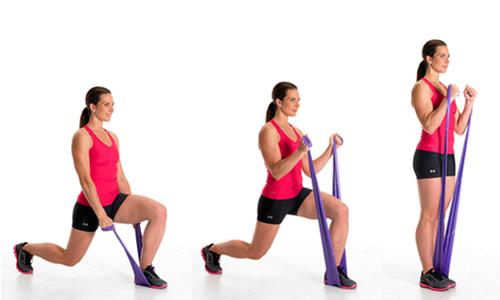
Exercising bands, cords, tubes… It’s all very interesting, but where and when has this trend begun? Once upon a 1895 year, a man named Gustav Gossweiler invented a stretchy gymnastic apparatus, which is their obvious ancestor. Follow me and you’ll learn all the answers to this question.
Of course, there have been many research, improvements, and new types (3 actually) developed over the years. But what changed, and what haven’t? Also, what had it been invented for? Or maybe you’re wondering what it could do at first and when have the health benefits been figured out? Let’s have a look at the band’s history so you understand it better.
First Off: What Are Bands?
Exercising bands (or tubes, or cords) are strips of dipper or extruded rubber (or latex) that vary in shapes (loops, strips, or tubes), accessories (handles, ankle straps, etc.), resistance levels and colors. They’re used to do a complete workout without all the machines.
If you lack time to go to the gym, it’s all right because cords’ exercises are effective even in less than 15 minutes. They’re also transportable so you can travel or use them in your hotel. Moreover, they’re quite useful for people suffering from arthritis, knee replacement, high blood pressure, and other illnesses can go through therapy (physical) and rehabilitation.
Companies are always improving their products, and this from the cords’ beginning, but there are always some that stand out from the crowd, such as shown in Resistance Bands. May it be due to their form, uses, benefits, accessories, or brands, tubes all vary and some are better fit for different objectives and types of person.
The Steps
Every project or creation starts with a first step. In this case, it came from a long line of strength training that began in Ancient Greece. Strength training consists of a physical exercise that uses resistance as an inducer of muscular contraction.
As for the tubes themselves, they were invented by Mr. Gustav Gossweiler, a Switzerman, and patented on May 28, 1895. They were also meant for fitness training at first before adding its physical therapy and rehabilitation dimensions. Here are some of the creation’s attributes at the time:
- It was described as a ‘’gymnastics apparatus’’ and had wide clips and handles so they wouldn’t injure the hand.
- It is portable and saves space, as well as the benefits it holds for physical fitness for which it was first intended.
- The diverse positions and exercises possible with this invention are the same as we use today with the resistance tubes.
The Revolution
Bands hadn’t undergone any changes until the 60s where they began being used for physical therapy and rehabilitation in resistance training. Slowly, the general public gained access to it, and not only health professionals. During the 80s, the revolution was at its peak as companies and manufacturers appeared and specialized in resistance tubes and exercise, like Aylio’s 3 loop bands for exercise.
Their Benefits
The benefits have stayed the same for fitness training, however, some have been discovered over the years such as being helpful in rehabilitation and physical therapy. Their construction methods have also been changed, from extruded rubber to it being dipped, producing a more resistant and stronger band.
Health issues: Thanks to these, a knee replacement, diabetes and high blood pressure can be improved, including so many other illnesses and sources of pain. This benefit has been recently discovered in the 1960s.
Time-saver: Most people can’t find time for the gym with their busy schedule, but with resistance bands you’re able to train quickly and effectively as a complete workout is made possible. You can take it with you and train for 10 minutes in your hotel and you’ll have very good results.
Portability: Cords are easily stashed into your bag or closet, and you can take them on trips. They don’t take much space either, so you won’t feel like your house hoarded unlike with workout machines and other fitness apparatuses.
Fitness: Since the beginning it has been a useful exercising tool to maintain a good health and develop strength, along as lose weight. Some also permit to gain lean mass muscle, but they all do so for endurance through tension workouts.
Victor of Time
The band’s ancestor, the gymnastic apparatus, created in 1895 by Mr. Gossweiler is even more relevant and used than during his time. Not only has it undergone many improvements and safety checks, but many health discoveries were made about its benefits.
Plus, exercising tubes do more than a simple workout machine as you have a complete workout with them and they save you money – what are you waiting for, then? With all these good points, how can you refuse your body this invention of time?
Contents